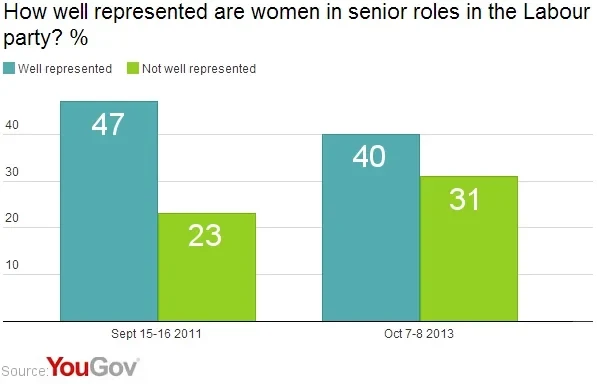The perception that women are well represented in senior party roles has fallen sharply for both leading parties since 2011 – although Labour still fare better
Both the coalition government and Labour have now reshuffled their senior Cabinet Ministers, in joint attempts to diversify the leading ranks. David Cameron’s Conservative adjustments were dubbed the ‘flat cap’ reshuffle, an attempt to promote Northern and working-class MPs, while Labour focused specifically on women.
However, confidence among voters that either of the leading political parties include sufficient numbers of women at the highest level has dropped significantly over the past two years.
The number thinking women are well represented in senior roles in the Labour party has dropped from 47% in 2011 to 40% this September, while the number thinking they are not has risen from 23% to 31%.

The Conservatives have suffered a parallel decline: 33% thought women were well represented at the top of the party in 2011 and only 27% do so now, while the number thinking they are not well respresented has risen from 37% to 45%.

Women are less likely than men to think either party has enough female Ministers. 32% of women compared to 48% of men think Labour have enough female Ministers, while 23% of women and 31% of men think the same about the Conservatives.
Though perceptions are failing both parties, Labour still fare three times better than the Conservatives - and this reflects the reality. While the Conservatives now have four in 27 female Cabinet Ministers, Labour have 12 in 26.

But despite Labour’s efforts, 50% say it makes no difference if there are more women in senior government roles anyway. In contrast, 35% say there should be more women at the top of politics while 3% say there should not be and 11% don’t know.
Image: Getty







